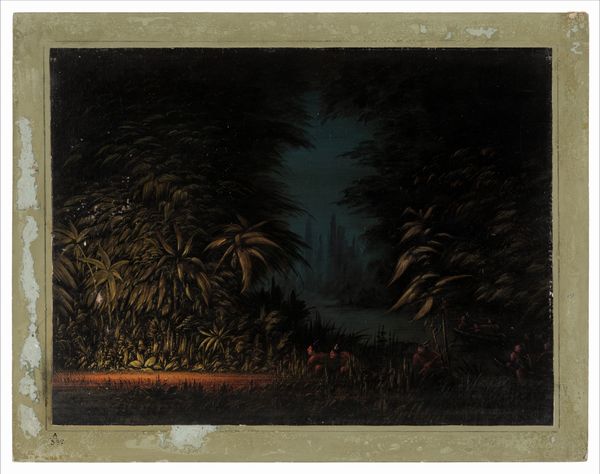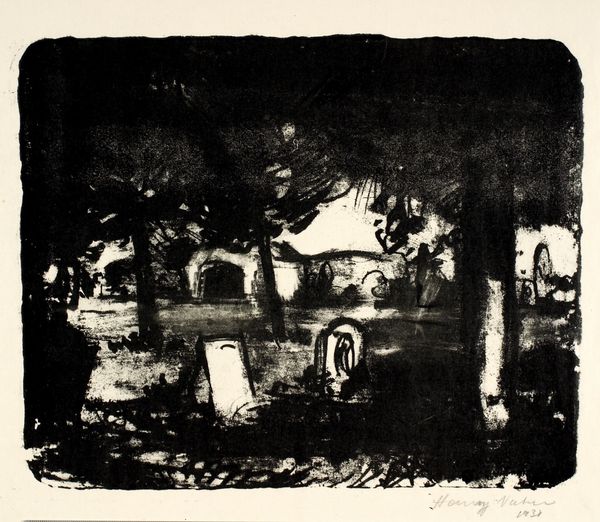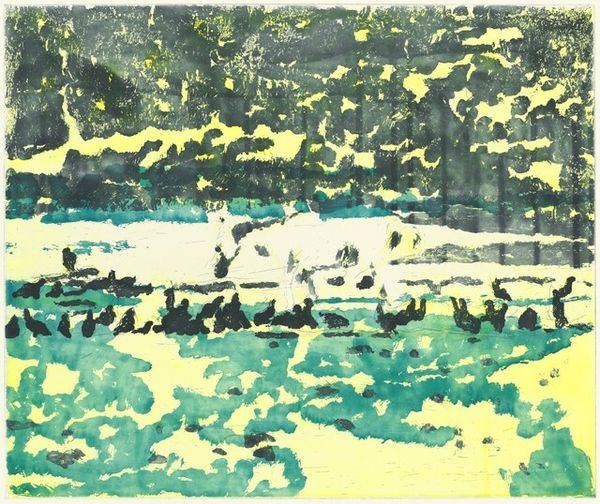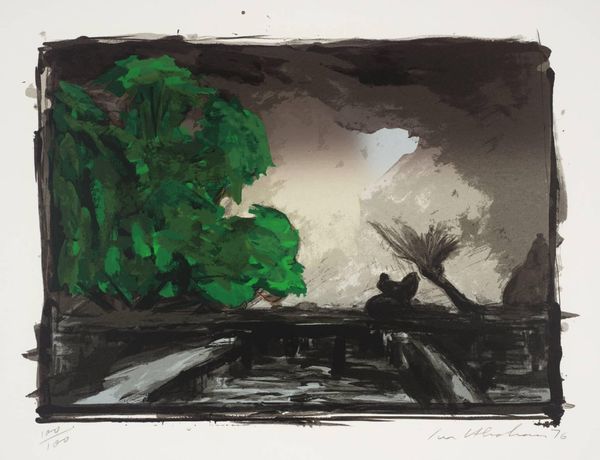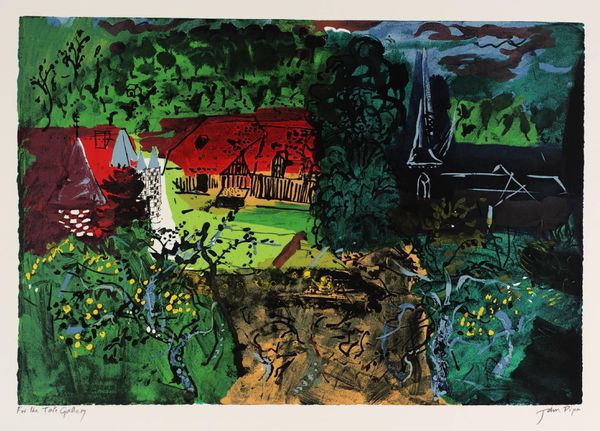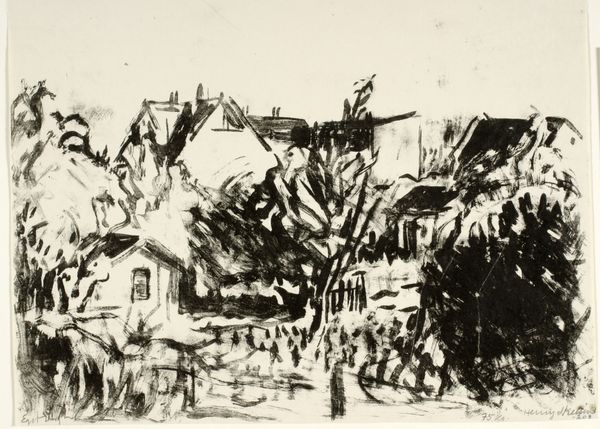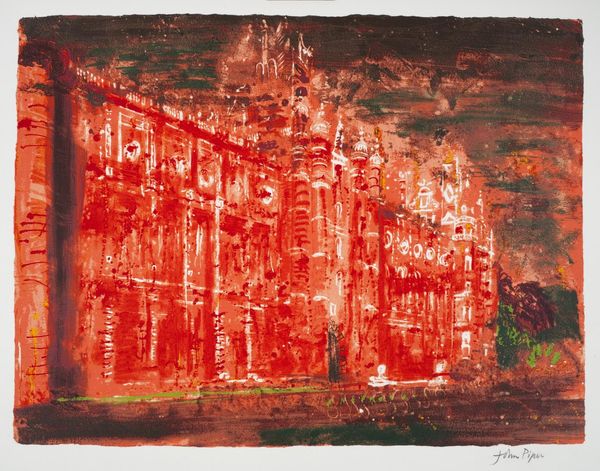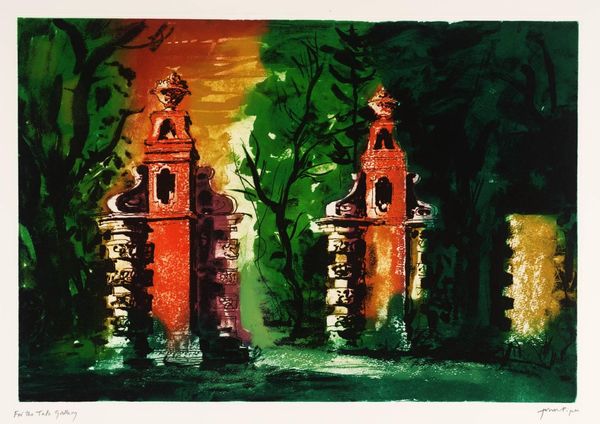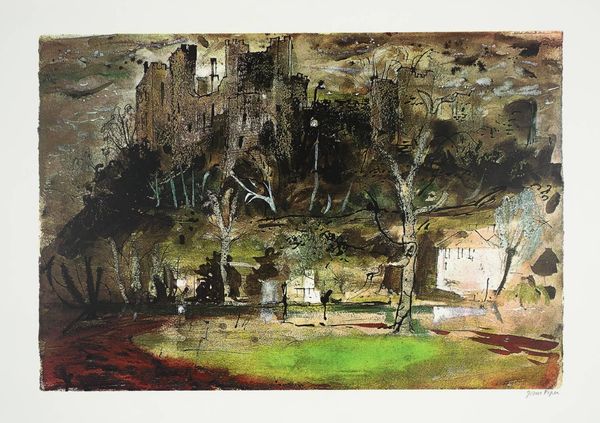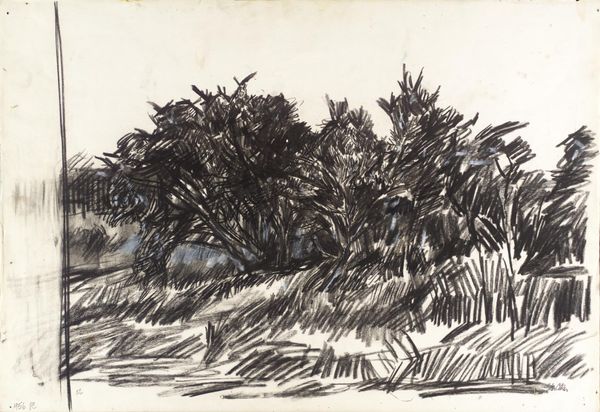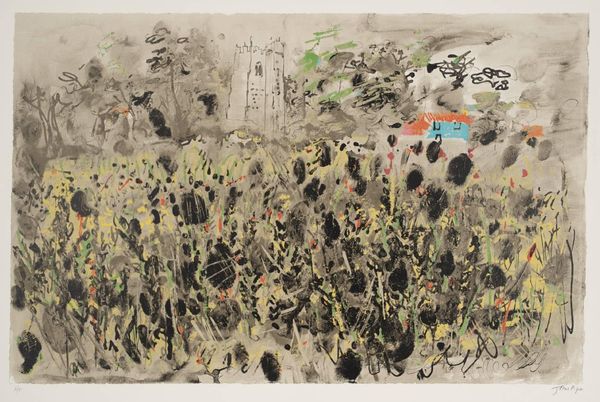
Dimensions: image: 635 x 838 mm
Copyright: © The Piper Estate | CC-BY-NC-ND 4.0 DEED, Photo: Tate
Editor: This is John Piper’s "Skeebost, Skye" held at the Tate. The lithograph print depicts a ruin overgrown with plant life. It feels both romantic and melancholy. What do you see in this piece? Curator: I see the enduring power of nature reclaiming what’s been built. The ruin becomes a vessel, doesn’t it? A silent witness, echoing cultural memory. Consider how Piper uses red, suggesting life even amidst decay. Editor: So, the ruins are more than just old stones? Curator: Precisely! They transform into symbols of resilience, suggesting cycles of destruction and regeneration inherent in cultural and natural landscapes. Food for thought. Editor: I never considered ruins as hopeful. Curator: Piper’s art helps us see beyond the immediate, revealing deeper truths within these remnants.
Comments
Join the conversation
Join millions of artists and users on Artera today and experience the ultimate creative platform.
tate 7 months ago
⋮
Most of Piper’s landscapes were in southern Britain, but he worked in the whole of Britain and Ireland. He made several working trips to Scotland, including a visit to Skye. This little farm building is in ruins, but Piper strongly opposed the repair and tidying of ruined buildings. He preferred to see them collapse and return to nature, an aesthetic principle he described as ‘pleasing decay’. Piper sketched and photographed on the spot, but made most of his drawings in his studio in the Chilterns near Henley. Here he would assemble photographs, drawings and guidebooks around him as he drew. Gallery label, July 2008
